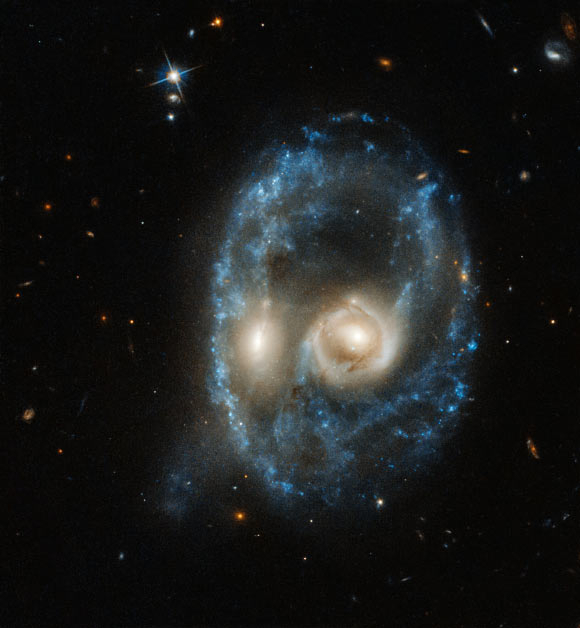Through the Hubble Space Telescope, NASA was able to witness a titanic collision between two spiral galaxies. According to the agencies, a merger between these two cosmic bodies will most likely occur after the collision.
In the latest photo captured by the space telescope, which is managed through a joint effort by NASA and the European Space Agency, two galaxies currently locked into one another can be seen. NASA explained that this galactic collision occurred in the constellation of Andromeda, which is about 300 million light-years away from Earth.

Collision Between UGC 1810 And Arp 273
The large galaxy located near the top of Hubble's photo has been identified as UGC 1810. The smaller galaxy below it is known as Arp 273. These two cosmic objects are known as spiral galaxies, which means they have a distinct shape characterized by their swirling arms. Although both belong to the same family of galaxies, Arp 273 has a different appearance. It is not clear if its shape was distorted by the collision with UGC 1810 or if another cosmic structure in space caused its appearance.
As noted by NASA, Hubble was able to capture the moment as UGC 1810 and Apr 273 collided with each other. Like other galaxy collisions, the cosmic fender-bender between UGC 1810 and Apr 273 will most likely last for thousands or even millions of years.
Effect Of Collision On UGC 1810
As per NASA, the photo shows that UGC 1810 is exhibiting a blue outer ring composed of massive stars. The space agency noted that this outer structure surrounding UGC 1810 may have been formed due to the effects of the collision as well as the presence of other galaxies, which can be spotted in the foreground.
"The overall shape of the UGC 1810 -- in particular its blue outer ring -- is likely a result of wild and violent gravitational interactions," NASA explained in a statement. "The blue colour of the outer ring at the top is caused by massive stars that are blue hot and have formed only in the past few million years."

The Merger of UGC 1810 And Arp 273
NASA noted that the collision between UGC 1810 and Apr 273 will most likely result in a merger. Since the former is the bigger of the two, it will most likely devour the latter as the collision progresses. According to NASA, UGC 1810 might also do the same to the other smaller galaxies near it for the billion years.
"UGC 1810 will devour its galactic sidekicks over the next billion years and settle into a classic spiral form," NASA stated.









